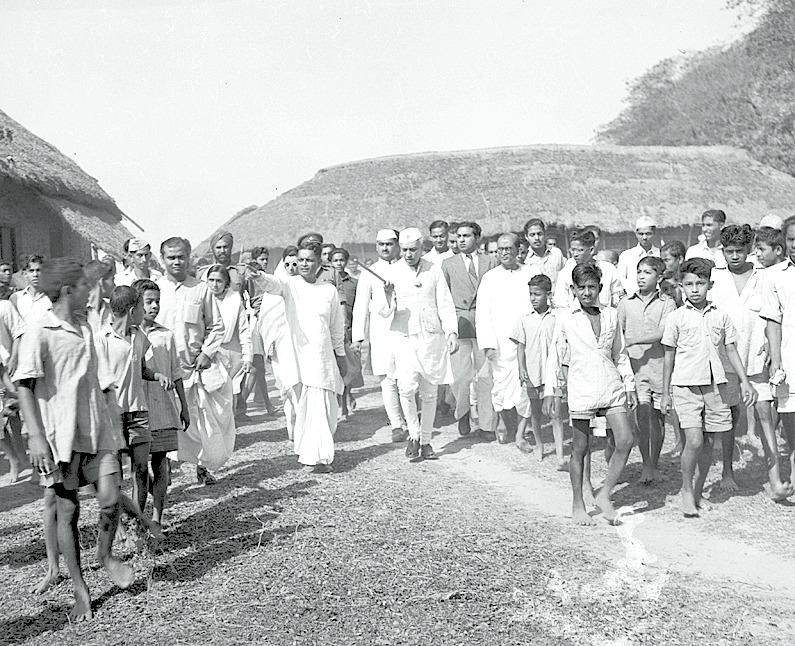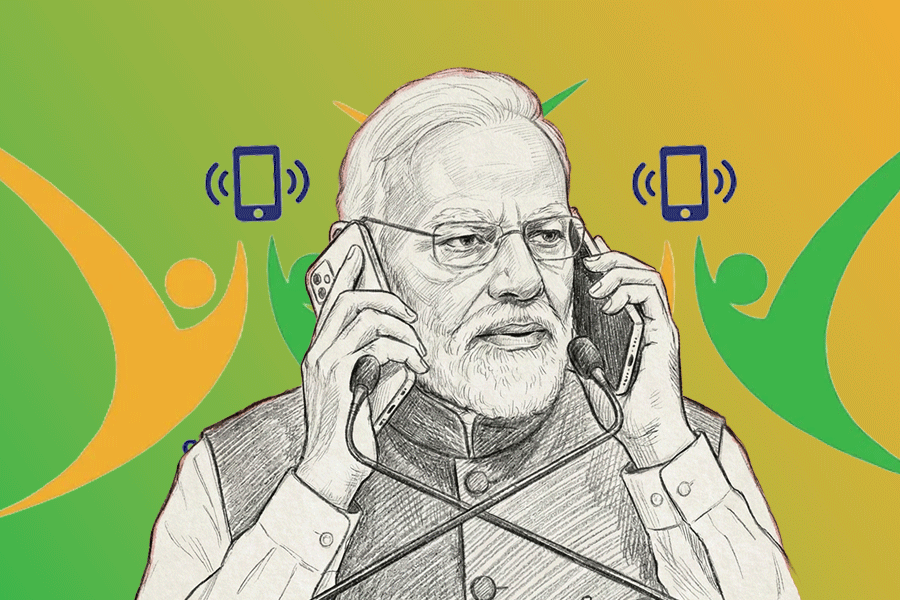
India, as I have said before and must say here again, is in danger of becoming an 'election-only' democracy. The media have played a major role in making this so. Newspapers, television channels and, increasingly, websites too obsess excessively about state and national elections, focusing minute attention on candidate choices, caste combinations, campaign strategies, leadership styles, and so on. But once the election is over and a particular party has won, they take their eye off the process of governance itself. Over the five-year period that a government is in power, the media pay inadequate attention to what it is doing - or not doing - to improve the well-being of its citizens.
This single-minded focus on elections is currently being manifested in my home state, Karnataka, which goes to the polls next month. This is the only large state where the Congress is in power. This is also the only southern state where the Bharatiya Janata Party has a major presence. Therefore, how the state votes in May 2018 may provide portents for how the country shall vote in May 2019 (or whenever the next general elections are called). For these reasons, hordes of journalists from the so-called 'national' press have descended on Bangalore to sniff the winds. Some stay rooted in the state capital, talk to a few local journos and a few local politicos, and file their stories. Others are slightly more intrepid, and drive into the interior or along the coast, and so get a less Bangalore-centric sense of how the state might vote.
The interest of the 'national' press in Karnataka is entirely episodic. As with all other states of the Union, it wakes up only when Karnataka is about to go to the polls. Once the polls are done and dusted, the state recedes to the margins of the 'national' imagination. Unless there is a major communal riot or natural disaster, the 'national' press will forget about Karnataka for another five years.
But citizens of Karnataka cannot afford to be so erratic. They work and play here, live and die here. Therefore, what matters to them is not so much who wins the next election, but what kind of government the party that wins the election shall provide. What are the social and economic challenges facing the state of Karnataka? How might its resources be more wisely used? What kind of policies should a new government focus on? Such questions are entirely absent in the 'national' narrative around the Karnataka elections, although they matter most to voters of the state.
Fortunately, the intellectuals of the state have kept their eyes on these questions. Recently, four scholars - Valerian Rodrigues, Nataraj Huliyar, Rajendra Chenni and S. Japhet -have authored a short monograph titled Speaking for Karnataka. Published both in English and in Kannada, the document provides a fine overview of the state's social profile and cultural traditions. It focuses on the state's heterogeneity, the diversity of its religious, literary, aesthetic and political traditions. It celebrates the social movements of Dalits, women and farmers that have sought, albeit with mixed success, to mitigate the inequalities of caste, gender and class.
Speaking for Karnataka ends by listing 15 concerns that the authors share. This constitutes a forward-looking manifesto for governance which needs to be brought to the attention of whoever becomes chief minister after the elections. In what follows, I discuss some of the more pressing of these concerns.
Rodrigues et al write that "the regional disparity in Karnataka spells danger... A stronger and integrated response is called for to address this disparity." Later, in their manifesto, they remark: "It is important to decongest Bangalore." These two concerns are interrelated. Whereas states like Maharashtra and Tamil Nadu have several major industrial hubs, too much of Karnataka's entrepreneurial activity occurs in and around the state capital. If the government can develop or encourage alternative centres of services and manufacturing in other parts of the state, then Karnataka may see more balanced development.
Unfortunately, these regional disparities are manifest in the sphere of agriculture as well. The southern parts of the state, watered by the Kaveri, have far better irrigation facilities than the northern parts. There is an urgent need for more focused research on dryland crops, and on regenerating and reviving tank irrigation in farming areas far from major rivers.
The authors of Speaking for Karnataka observe that "there is little presence of women in Karnataka's public life today. All political parties in Karnataka should take immediate measures to enhance their representation." Tragically, the political parties are not listening. In their candidate lists, released a month after this document was released, the Congress nominated less than 20 women (in an assembly of 225), whereas the BJP and the Janata Dal (Secular) each nominated less than 10.
Historically, women in Karnataka were less oppressed/more advanced than in many other parts of India. They were rarely, if ever, in purdah. Medieval Karnataka produced major women saints and thinkers; modern Karnataka produced the greatest Indian woman of the 20th century, Kamaladevi Chattopadhyay. Even now, in the state's towns, many women are successful lawyers, doctors, bank managers and entrepreneurs. However, while by no means as disadvantaged as their sisters in northern India, women in Karnataka are far from being equal citizens.
Rodrigues et al also note that "Karnataka could be one of the best tourist destinations in the world. Very little attention has gone in tapping this resource." They are right, on both counts. Karnataka has more to offer to the domestic and foreign tourist than perhaps any other state in the Union. Its landscapes are very diverse and staggeringly beautiful; from the tropical rain forests of the Western Ghats to the glories of the Konkan coast, from the lush paddy fields of the Kaveri basin to the rock formations of Hyderabad-Karnataka. Its architectural jewels are as spectacular - from the great ruined city of Hampi to the even older (and in my view more beautiful) shrines of the Badami area, from the Hoysala temples of the south to the mosques of Bijapur and Gulbarga. And it has great wildlife sanctuaries too. With better planning, the state could get more tourists than the currently favoured destinations of Kerala and Rajasthan.
A final concern I would like to flag is environmental sustainability. The authors of Speaking for Karnataka write that "the state needs to pay urgent attention to the ecological challenges it confronts. One of the ways of heeding this challenge is afforestation, particularly in the dry belts of the state." This is true, although wise management of water resources may be even more critical. The dependence of Bangalore on water pumped up from many kilometres away is absolutely unsustainable. The state's rivers are extremely polluted, while in areas of commercial farming groundwater aquifers are being depleted at an alarming rate. Bangalore has India's two finest centres of ecological research, yet the scientists who work there are rarely (if ever) consulted by the ministers and bureaucrats who frame the state's forest and water policies.
There are other concerns that the document lists, among them the pathetic state of public healthcare and the widespread corruption in public institutions. And there may be yet other concerns that have escaped the attention of the authors of Speaking for Karnataka, but which are nonetheless of importance to the state's citizens. It is important that this document is discussed and debated widely. For the 'national' press, Karnataka matters only when it goes to the polls; but for those of us who live in the state, what happens in between elections matters far more.










